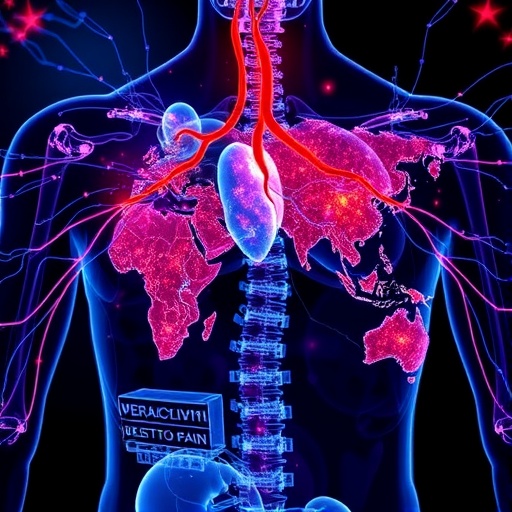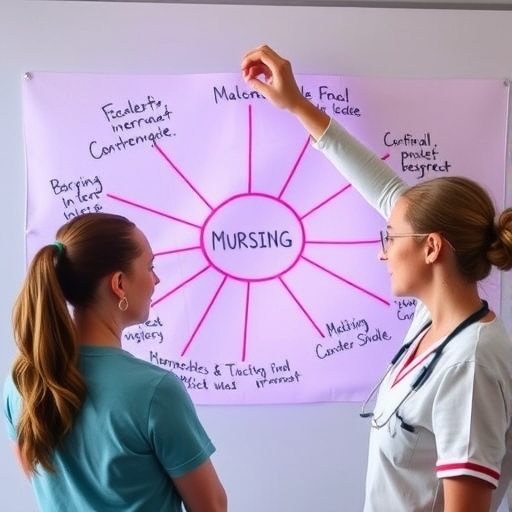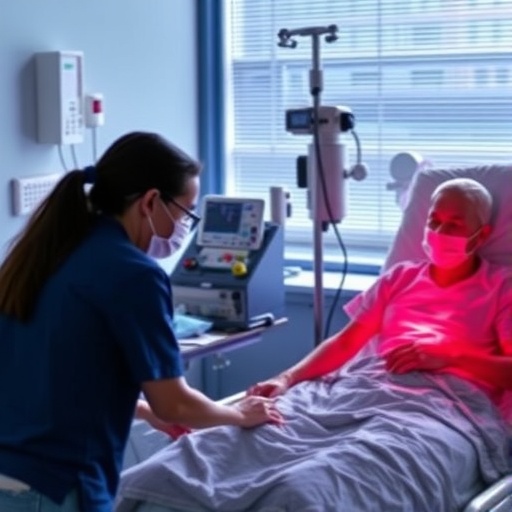In a groundbreaking advance poised to reshape our understanding of cardiovascular disease, researchers have unveiled an integrated single-cell atlas of human atherosclerotic plaques, illuminating the cellular complexity that underpins this life-threatening condition. Atherosclerosis, the progressive narrowing and hardening of arteries due to plaque buildup, remains a leading cause of heart attacks and strokes worldwide. Yet, the intricate cellular landscape within these plaques has remained only partially understood—until now. This comprehensive new study leverages cutting-edge single-cell sequencing technologies to expose the diverse cellular players and their dynamic interactions within atherosclerotic lesions, charting new paths for targeted therapies.
Atherosclerotic plaques develop over decades, characterized by the accumulation of lipids, immune cells, and fibrous material inside arterial walls. These plaques can rupture or erode, precipitating acute cardiovascular events that kill millions globally each year. Traditional bulk tissue analyses have obscured the cellular heterogeneity and subtle phenotypic shifts that dictate plaque stability or vulnerability. The advent of single-cell RNA sequencing allows scientists to dissect tissues at unprecedented resolution, cataloging every cell type and state. The team behind this latest atlas applied these methods systematically to human atherosclerotic plaques, generating a detailed cellular map that captures both expected and novel cell populations.
Employing samples from patients undergoing carotid endarterectomy, the researchers performed single-cell transcriptomic profiling on thousands of cells isolated directly from plaques. Their analysis revealed an astonishing diversity of immune and stromal cells, including multiple macrophage subsets, smooth muscle cell phenotypes, endothelial subpopulations, and immune lymphocytes. The identification of distinct macrophage states, some pro-inflammatory and others associated with tissue remodeling or lipid handling, underscores the complex immunobiology of plaques. Distinct smooth muscle cell subsets were also found that differentially contribute to matrix deposition or inflammatory processes, highlighting their dual and sometimes paradoxical roles in plaque progression.
Beyond cataloging cell types, the study integrates spatial transcriptomics to link molecular profiles with anatomic localization within plaques. This spatial mapping revealed that certain inflammatory macrophages cluster near regions of lipid cores, while fibrous cap areas are enriched for contractile smooth muscle cells. Such insights shed light on the microenvironmental niches that regulate plaque stability. The multilayered approach combining single-cell and spatial data sets a new standard for tissue atlases, providing a template for dissecting any complex pathology with cellular precision.
The data uncovered previously unrecognized cellular cross-talk mechanisms driving plaque evolution. For example, interactions between macrophage subsets and endothelial cells via specific chemokines suggest feedback loops that amplify local inflammation or promote vascular remodeling. Moreover, the atlas highlights transcriptional programs responsive to oxidative stress and hypoxia within plaques, conditions known to exacerbate tissue damage. These findings open new investigative frontiers into how microenvironmental stressors reshape cellular phenotypes and contribute to plaque destabilization.
Importantly, this single-cell atlas is not just a descriptive resource but a powerful platform for identifying therapeutic targets. By pinpointing specific cell subsets and their signaling pathways that correlate with high-risk plaques, the research provides candidate molecules for drug development. Interventions aimed at modulating macrophage phenotype transitions or enhancing the stability-promoting smooth muscle cell populations could revolutionize treatment strategies. Current cardiovascular therapies largely focus on systemic lipid lowering; targeted modulation at the plaque microenvironment level offers a complementary approach with potentially greater efficacy.
The study’s implications extend beyond atherosclerosis, demonstrating the transformative potential of integrated multiomic and spatial profiling technologies in vascular biology. This atlas serves as a proof-of-concept for applying single-cell approaches to other complex tissues where cellular heterogeneity underlies disease outcomes. Moreover, as cardiovascular diseases frequently intersect with metabolic and inflammatory disorders, understanding cell signaling networks in plaques may provide insight relevant to systemic health.
The research team also constructed a publicly accessible interactive database allowing scientists worldwide to explore and mine the single-cell profiles. This democratization of data accelerates discovery by fostering cross-disciplinary collaborations. Computational biologists, immunologists, and clinicians can interrogate the atlas to generate hypotheses, correlate findings with clinical parameters, and design experiments to validate targets. The open-access nature exemplifies modern science’s shift towards transparency and reproducibility.
From a methodological standpoint, the study exemplifies the meticulous optimization of tissue processing, cell dissociation, and sequencing protocols required for producing high-quality single-cell data from challenging human samples. Preserving cell viability and transcript integrity in fibrotic and lipid-laden plaques is non-trivial, but essential for robust insights. The investigators detail their workflow, paving the way for replication and adaptation by others studying hard-to-access tissues.
The integration of computational analytical pipelines was equally crucial, with advanced clustering algorithms and differential expression analyses resolving subtle phenotypic distinctions that evade conventional approaches. Machine learning methods identified rare and transitional cell states that may represent key nodes in plaque progression. Furthermore, trajectory inference analyses mapped developmental-like paths among smooth muscle and immune cells, revealing dynamic phenotype plasticity within lesions.
In summary, this pioneering work transforms our conceptual framework of atherosclerosis, moving from a simplified endothelial-immune lipid model toward a multidimensional cellular ecosystem paradigm. Recognizing plaques as complex organs composed of interacting cell communities reshapes research and clinical landscapes. Future studies building upon this atlas hold promise for precise diagnostics and personalized therapeutics that can preempt catastrophic cardiovascular events.
As cardiovascular disease continues to exact a devastating global toll, innovative approaches like this integrated single-cell atlas bring hope for early detection, risk stratification, and effective intervention. By decoding the cellular language of plaques, scientists are moving closer to demystifying—and ultimately defeating—one of humanity’s deadliest foes. This study stands as a testament to the power of interdisciplinary research and cutting-edge technology to illuminate complex biology and translate insights into lifesaving medical advances.
Subject of Research: Integrated single-cell analysis of human atherosclerotic plaques revealing cellular heterogeneity and interactions within lesions.
Article Title: Integrated single-cell atlas of human atherosclerotic plaques
Article References:
Traeuble, K., Munz, M., Pauli, J. et al. Integrated single-cell atlas of human atherosclerotic plaques. Nat Commun 16, 8255 (2025). https://doi.org/10.1038/s41467-025-63202-x
Image Credits: AI Generated
Tags: atherosclerotic plaques and heart healthcardiovascular events and plaque rupturecellular complexity in cardiovascular diseasecellular heterogeneity in plaque stabilityhuman health and atherosclerosis researchimmune cells in atherosclerosisInnovative Approaches to Heart Diseaselipid accumulation in arterial wallssingle-cell atlas of atherosclerosissingle-cell RNA sequencing technologytargeted therapies for atherosclerosisunderstanding cellular interactions in atherosclerotic lesions





